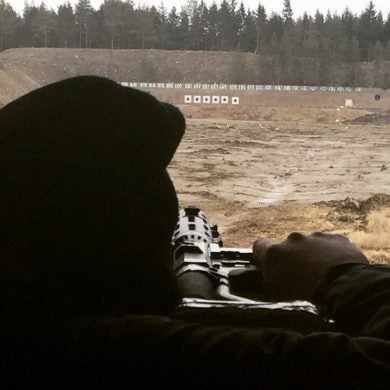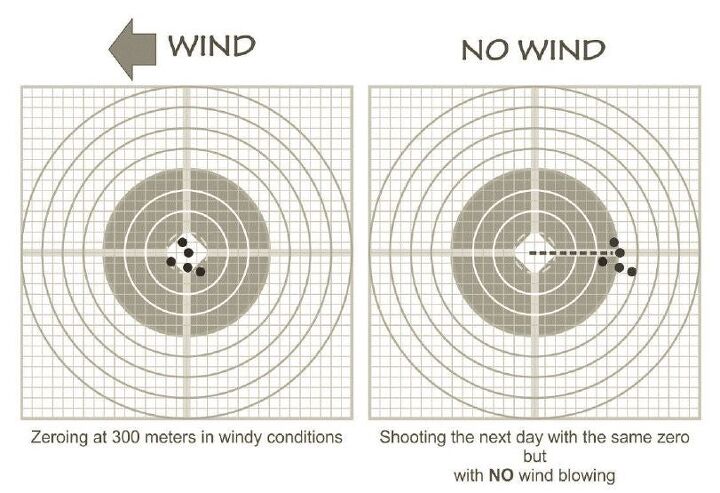The Department of the Army has recently released a gold mine including the updated Rifle & Carbine Training Circular Training Circular. This manual was last updated was 8 years ago in 2008.
I’m sure that you – just like me – have spent a small fortune on firearms, optics, accessories and so much ammunition. How often do we train “right” and how much do we really think about what is going on when we hit or miss a target? We miss, we shoot again and hope we hit. Eventually if we keep missing we then shoot at something easier and closer down the shooting range. But what if we analyzed what is really going on and why we missed? Could we improve our hit probability?
I know I do not spend enough time reading literature about ballistics and understand what is going on with the weapon, my shooting stance, the ammunition and the relationship between the physical environment and the target. Now I have no excuse because there are 236 pages waiting to download and study, all for free. As a bonus, there are easy to understand graphs and pictures.

Example of artwork included to explain.
If this manual was created for commercial sale, it would not be cheap. I wish I had it available when I began learning to shoot. The Army’s document is such a vast source of information it’s hard even to describe it in brief. They summerize it as …
“Training Circular (TC) 3-22.9 provides Soldiers with the critical information for their rifle
or carbine and how it functions, its capabilities, the capabilities of the optics and ammunition,
and the application of the functional elements of the shot process.”
…
“This manual is comprised of nine chapters and five appendices, and is specifically tailored
to the individual Soldier’s use of the M4- or M16-series weapon. This TC provides specific
information about the weapon, aiming devices, attachments, followed by sequential chapters
on the tactical employment of the weapon system.
The training circular itself is purposely organized in a progressive manner, each chapter or
appendix building on the information from the previous section. This organization provides
a logical sequence of information which directly supports the Army’s training strategy for
the weapon at the individual level.
Chapters 1 through 4 describe the weapon, aiming devices, mountable weapons, and
accessories associated with the rifle and carbine. General information is provided in the
chapters of the manual, with more advanced information placed in appendix A, Ammunition,
and appendix B, Ballistics.
Chapters 5 through 9 provide the employment, stability, aiming, control and movement
information. This portion focuses on the Solider skills needed to produce well aimed shots.
Advanced engagement concepts are provided in appendix C of this publication. Appendix D
of this publication provides common tactical drills that are used in training and combat that
directly support tactical engagements. Finally, appendix E of this publication, is provided at
a common location in this and future weapons publications to provide a common location
for reference.
This manual does not cover the specific rifle or carbine training strategy, ammunition
requirements for the training strategy, or range operations. These areas will be covered in
separate training circulars.
…
TC 3-22.9 applies to all Soldiers, regardless of experience or position. This publication is
designed specifically for the Soldier’s use on the range during training, and as a reference
while deployed.”
Below: Wind Direction and Value

The manual goes through Safe Weapons Handling, Rifle and Carbine Principles of Operation, Rifle Combat Optics plus all sorts of Mountable Equipment. It also covers the shooting process, firing positions, moving targets, wind onto clearing malfunctions and shooting on the move. Ammunition, Ballistics, Zeroing the rifle and different drills. Read it and you will become a better thinker and shooter!
Download the PDF here: http://fas.org/irp/doddir/army/tc3-22-9.pdf
More examples from the manual are below:
Below: Prone, roll-over. (page 104)

“For example, in the figure above the sights are rotated to the right. The trajectory of the bullet will be lower than and to the right of point of aim. This error will increase with range.”
I know this as I recently tried it at 330 yards. Not easy, but with some math, calculations and thinking about what actually was going on we started hitting the targets. Great challenge, great fun!

JP Enterprises CTR-02 in .223 Wylde, tilted 90 degrees left. 330 yards. Zeiss V8 1.1-8x
And the iPad Pro can be a great help in the process…

Below: Firing position stability examples. We all feel it, but how often do we think about what is affecting our shooting stability and why?

Below: MOA vs. distance explained.

Below: Have you ever wondered why your zero keeps moving to either side?

Make sure you read the manual and shoot straight! Good luck!
PS There is very little (nothing) mentioned about the cleaning of the rifles. I’m sure that will be an interesting appendix.
 Your Privacy Choices
Your Privacy Choices
